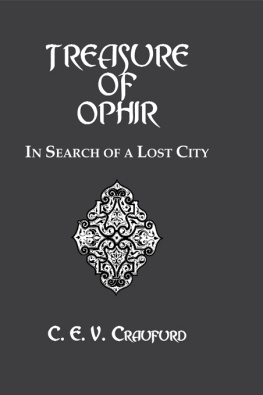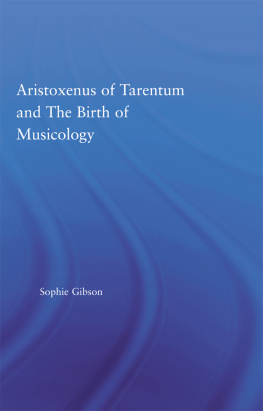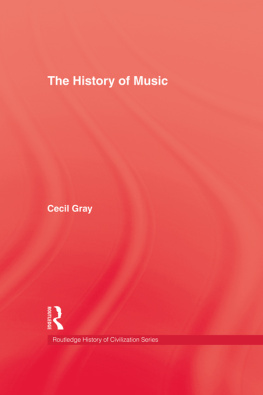THE KEEPER'S BOOK
Peter Jeffrey Mackie writes in his introduction to The Keeper's Book that Sport and love of sport is part of the great heritage of our race. He believes that sport and sportsmanship are what keeps society thriving and is undoubtedly one of our most powerful social forces in this day and age. This book pursues the sport of the hunt and the social interactions associated therein. This particular past time requires not only a love of adventure, but also self-discipline, patience and technical skill. Not only does Mackie discuses the pursuit and conquest of wild animals, but he also describes how to preserve them, covering all matters in great detail. Mackie goes on to cover everything from hunting to angling in astounding detail. Although first published in 1929, this timeless classic is sure to peak the curiosity of anyone interested in outdoors amusements and their impact today.
www.keganpaul.com
KEGAN PAUL LIBRARY OF COUNTRY AND COASTLINE PURSUITS
THE KEEPER'S BOOK SIR PETER JEFFREY MACKIE
AMID THE HIGH HILLS HUGH FRASER
THE KEEPER'S BOOK
A Guide to the Duties of a Gamekeeper
BY
PETER JEFFREY MACKIE
First published in 2005 by
Kegan Paul Limited
UK: P.O. Box 256, London WC1B 3SW, England
Tel: 020 7580 5511 Fax: 020 74360899
E-Mail: books@keganpaul.com
Internet: http://www.keganpaul.com
USA: 61 West 62nd Street, New York, NY 10023
Tel: (212) 459 0600 Fax: (212) 459 3678
Internet: http://www.columbia.edu/cu/cup
BAHRAIN: bahrain@keganpaul.com
Distributed by:
Marston Book Services Ltd
160 Milton Park
Abingdon
Oxforshire OX 14 4SD
United Kingdom
Tel: (01235 ) 465500 Fax: (01235)465555
Email: adirect.enqiries@marston.co.uk
Columbia University Press
61 West 62nd Street, New York, NY 10023
Tel: (212) 459 0600 Fax: (212) 459 3678
Internet: http://www.columbia.edu/cu/cup
Kegan Paul, 2005
Printed in Great Britain
All Rights reserved. No part of this book may be reprinted or reproduced or utilised in any form or by any electric. mechanical or other means. now known or hereafter invented. including photocopying or recording. or in any information storage or retrieval system. without permission in writing from the publishers.
ISBN: 0-7103-1158-3
British Library Cataloguing in Publication Data
Library of Congress Cataloging-in-Publication Data
Applied for.
PREFACE TO THE 16th EDITION
THAT a Sixteenth Edition of this book is required after seventeen years implies little credit to the ability of the Author-Editor. It must be remembered that there is always growing up a new generation of young sportsmen who require to go through the Mill of Learning to Play the Game, and that without this teaching they are a danger alike to themselves and their neighbours.
There is no finality to knowledge, and although in other respects this edition may not differ greatly from previous ones, it has been carefully revised and brought up to date as far as the knowledge of the Editor and of the various writers permits. As before, there are wide margins left for personal notes.
That many sportsmen may differ with the views expressed is to be expected, yet if this work forms the foundation on which other sportsmen of greater knowledge may add their experience, the object of the book will not have been sought in vain.
PETER J. MACKIE.
ACKNOWLEDGMENTS
I BEG to acknowledge my gratitude and thanks to Lord Glenconner, Mr. Archibald Thorburn, and Mr. Philip Rickman, and to Nobel Industries Limited and Messrs. Eric Nobel, and Rowland Green, for permission to use to copyright illustrations. Also to my friend Mr. John Geddie for his laborious work of reading and correcting my proofs.
P. J. M.
CONTENTS
Chapter
by H. Burn-Murdoch, Advocate and Barrister-at-Law
by Dr. Charles Reid
by Tom Speedy
by A. S. Leslie, C.B.E.
by Sir Peter J. Mackie, Bart.
by Sir PeterJ. Mackie, Bart.
by Captain Henry Shaw Kennedy
by Sir Peter J. Mackie, Bart.
by Lord Malise Graham
by Various Authorities
by Sir Peter J. Mackie, Bart.
by P. D. Malloch
by Henry Lamond (Secretary of the Loch Lomond Angling Improvement Association)
by Henry Lamond
by F. G. Aflalo
by Arthur Mainwaring
by Sir Peter J. Mackie, Bart.
by Bunnie Wyndham-Quin
by Major Hugh Pollard
by Arnold Jones, M.B., Ch.B., Senior Surgeon, Ayr County Hospital
LIST OF ILLUSTRATIONS
REPRODUCED IN COLOUR
THE AUTHOR From Vanity Fair, 1908
IN TEXT
INTRODUCTION

S PORT and love of sport is part of the great heritage of our race, and it is a far more important factor than many people realise. The Briton does not question his own conventions. It would be hard to frame a concise definition of all that we understand in the simple term sportsman ; yet not only our own race but the civilised world in general, has learnt to take this word, divorced from its simple relationship to field sports, and to apply it as descriptive of a code of conduct, a standard of behaviour or a rule of life governing in a wide sense a man's relationship to his fellowmen. Sportsmanship is in essence the adhesion of self-disciplined individuals to a collective code, and it is perhaps the most powerful of all our modern social forces. It is the spirit which has regulated, maintained and cemented the bonds of our own commonwealth of nations. Interpreted in a myriad ways, adapted to meet the needs of complex situations and difficult and wayward races, it has served us as statecraft, as diplomacy, as a code of justice, and above all as a code of honour and social service. Imperial Rome may have left on the world the impress of its laws and its roads. Imperial Britain has evolved this curious but entirely admirable code of sportsmanship.
One cannot deny the utility of ball games as distinct from sport in fostering something of the same spirit, but there is in these games a competitive or a team play spirit which, admirable in itself, is something apart from the essential quality of real sport. We must not be led to confuse the narrower and more specialised outlook and training of the athlete with the very much higher craft of the hunter. The one is an accomplishment, the other in a much wider sense a liberal education.
There are few better schools for a youngster than a good training on moor and hill, covert and marsh. He learns not only to shoot, but to shootclean. He learns not only the pursuit and conquest of wild creatures, but how to preserve them. He learns self-discipline, patience, and technical skill, and he learns how to use his eyes and how to see for himself. This is a book about shooting and the arts, crafts and responsibilities of our hunters of to-day, but I who write and you who read, know full well that no book can be more than a guide or a reminder. It can at best help you to know what to look forbut you must see and do for yourself.












